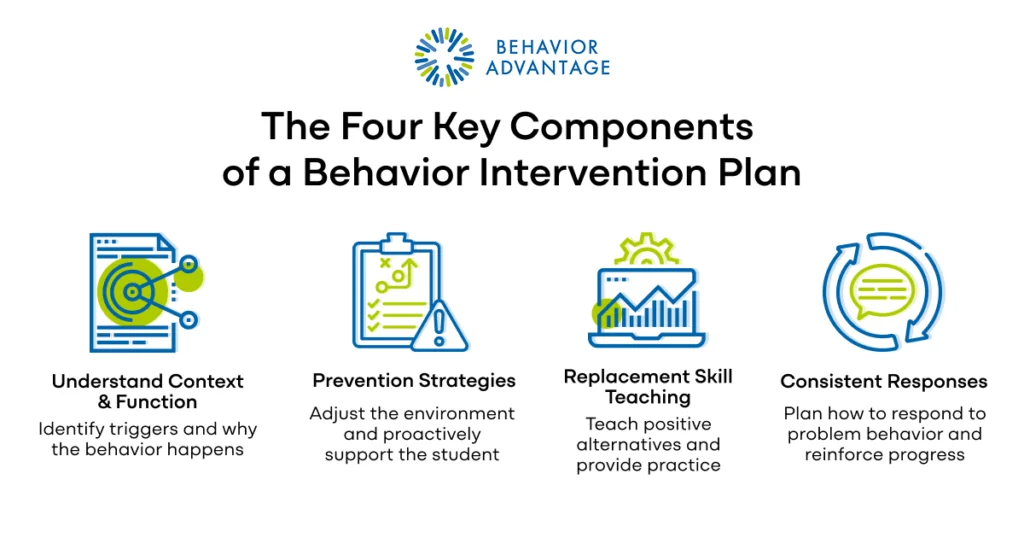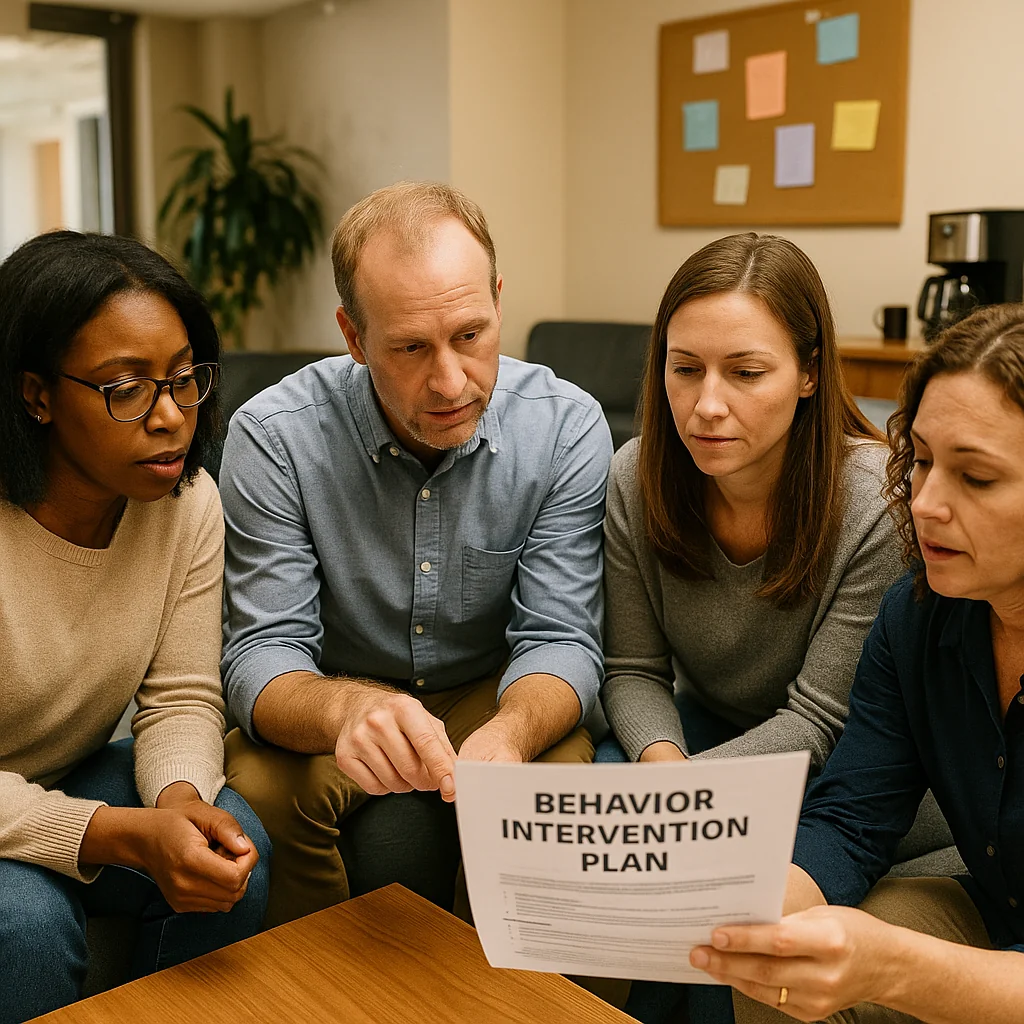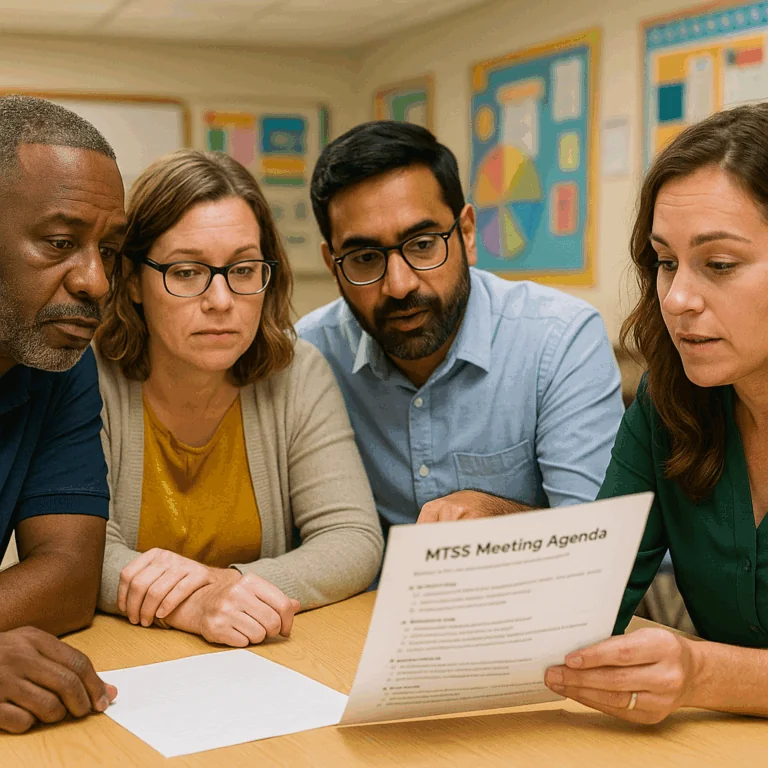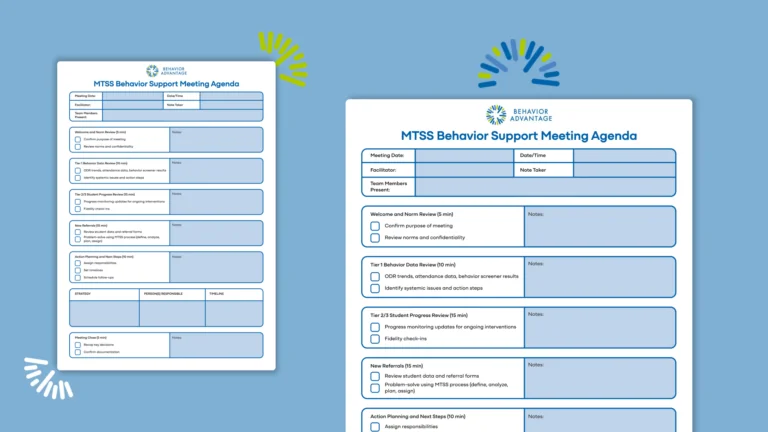When it comes to behavior, we know that change doesn’t happen just because we ask for it. Long-standing behavior patterns—especially those that show up in school settings—rarely disappear with a single conversation, consequence, or reward. For students receiving special education services, these behavior patterns often require more structured, intentional, and sustained support. That’s where a Behavior Intervention Plan (BIP) comes in.
In this article, we’ll walk through what a BIP is, why it matters in special education, and how to build one that actually helps students learn new, positive behaviors over time.
What Is a Behavior Intervention Plan for Special Education?
A Behavior Intervention Plan (BIP) is a formal, individualized plan designed to help a student replace challenging behaviors with more appropriate ones. It typically follows a Functional Behavior Assessment (FBA), which identifies when, where, and why problem behaviors occur.
In special education, a BIP is often included in a student’s Individualized Education Program (IEP) when behavior impedes learning—either for that student or others. The goal of the BIP is not just to reduce misbehavior, but to teach skills and design supports that promote long-term success.
If you want to learn more about BIPs and look at particular examples, you can go through our detailed guide.
Why Behavior Change Requires More Than Just Telling a Student to Stop
Let’s be honest—most of us have tried to change our own bad habits. And we know it’s not as simple as deciding to change. Behavior change takes time, repetition, and often external support.
It’s the same for students. Simply telling a student to stop a behavior that has “worked” for them for months or years is unlikely to result in lasting change. In fact, relying on verbal redirection or punishment alone can backfire, especially if the student doesn’t yet have the skills or support to succeed.
Common misbeliefs include:
- Thinking a strong enough consequence will stop misbehavior.
- Believing that a big enough reward will ensure compliance.
- Assuming that all disruptive behaviors can be handled the same way.
These approaches may work in isolated cases, but they rarely result in long-term change—especially for students with more intensive support needs.
The Four Key Components of a Behavior Intervention Plan
A well-designed BIP for special education includes four core components that work together to support behavior change:
- Understanding Context and Function
- What is happening before and after the behavior?
- Why is the behavior occurring (attention, escape, sensory, etc.)?
- Prevention Strategies
- What can we change about the environment to prevent the behavior?
- How can we proactively support the student?
- Replacement Skill Teaching
- What positive behaviors or skills can we teach instead?
- Are we providing enough practice opportunities?
- Consistent Responses
- How will we respond when the problem behavior occurs?
- How will we reinforce progress?
This foundation helps ensure that the plan is not just reactive, but proactive, supportive, and skill-building.
Download our free BIP PDF template to help you structure your plan!

Why BIPs Work in Special Education: A Coaching Model for Behavior Change
Think of a good BIP like a training plan from a skilled coach. If a gymnastics coach is helping a young athlete learn to walk on a balance beam, they don’t start by pointing at the beam and demanding perfection. They create a supportive relationship, model the skills, provide scaffolding, and offer feedback. They know when to push and when to pull back.
That’s how BIPs work. We meet the student where they are, create opportunities to practice new skills, and build in ways to acknowledge and encourage their efforts. Over time, with consistency and reinforcement, the new behaviors become fluent—and eventually, they become habits.
What Is the Difference Between an IEP and a BIP?
An IEP (Individualized Education Program) is a comprehensive plan outlining a student’s special education services, goals, and supports. A BIP is a more focused plan designed specifically to address behavior concerns.
While all BIPs are connected to a student’s IEP, not all IEPs include a BIP. A BIP is added when behavior is a significant barrier to learning and requires targeted intervention.
How to Build a Strong, Functional Behavior Plan
To design a meaningful BIP for special education, we can use the ABC (Antecedent-Behavior-Consequence) model:
- Antecedent Analysis – Identify triggers and set the stage for prevention strategies.
- Behavior and Skill Deficit Analysis – Pinpoint what the student is trying to communicate or avoid, and identify the missing skills.
- Consequence Analysis – Design logical responses that reinforce positive behavior and reduce reinforcement for problem behavior.
From there, match evidence-based strategies to each component:
- Use Prevention strategies to reduce triggers.
- Provide Teaching strategies to build new skills.
- Implement consistent Response strategies to reinforce growth.
When all three components are aligned, your behavior intervention plan becomes a clear, effective roadmap.
Read our comprehensive guide on how to write a BIP that works for further guidance!
Real-World Example: From Conflict to Consistency
Imagine a student who frequently walks out of class when presented with challenging tasks. A surface-level response might be to issue detention or send them to the office. But with a functional BIP, the team might discover that the student is avoiding tasks due to anxiety and lack of skills.
With that information, the plan might include:
- Providing task previews or reduced workloads (Prevention)
- Teaching self-advocacy or coping strategies (Teaching)
- Offering positive feedback and check-ins for effort (Response)
With time and consistent implementation, the student feels more capable, connected, and motivated to stay in class.
Conclusion: Why BIPs Matter in Special Education
Changing behavior—especially for students with persistent patterns—requires more than redirection, consequences, or hope. It takes thoughtful planning, consistent implementation, and supportive environments that foster growth.
A well-crafted Behavior Intervention Plan isn’t just a compliance document. It’s a powerful tool to help students build the skills they need to thrive in school and beyond.
Looking for templates, examples, or software that makes the BIP process easier? Explore how Behavior Advantage helps schools create simple, effective behavior intervention plans that actually work.









